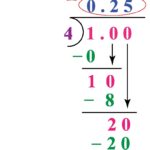An atlas is fundamentally a collection of maps, traditionally bound in book form. However, modern atlases can also exist in digital formats. These comprehensive resources go beyond simple map presentations, often incorporating geographical facts, historical context, and diverse thematic information related to specific regions or the entire world.
World atlases typically showcase maps of countries and continents. They often provide crucial facts about each nation, including population figures, locations of natural resources, and insights into cultural, religious, and political landscapes. Detailed maps of major cities and prominent landmarks may also be included, enhancing the atlas’s utility for various purposes.
Atlases are not limited to geographical representations of Earth. Specialized atlases cater to specific needs and interests. Road atlases, for instance, are indispensable tools for travelers, offering detailed road networks, points of interest, and travel-related information. Historical atlases offer a glimpse into the past, illustrating political boundaries, migrations, and significant events throughout history. Star atlases, on the other hand, chart the cosmos, detailing the positions of stars, planets, and other celestial objects.
While maps have been used for millennia, the development of large, bound atlases as we know them gained momentum in the 16th century. This era coincided with extensive exploration and colonization by European and Asian powers. These countries relied heavily on atlases to navigate unfamiliar territories, establish trade routes, and chart newly discovered lands. As European explorers mapped the Americas, often referred to as the “New World,” they updated atlases with their findings, contributing to the evolving geographical knowledge base.
The term “atlas” itself has an interesting origin. In 1595, a collection of maps by the renowned Flemish cartographer Gerardus Mercator was published, prominently featuring the word “atlas” in its title. This referred to a depiction of King Atlas, a mythical African ruler credited with inventing the first celestial globe. A celestial globe is a spherical map of the stars and constellations, crucial for navigation in earlier times, allowing sailors to determine their position at sea by observing the stars. Mercator’s inclusion of King Atlas highlighted the king’s significance to navigation and cartography. This marked the first instance of “atlas” being used to describe a collection of maps, eventually becoming the standard term for any book containing maps. In conclusion, an atlas is more than just a book of maps; it is a gateway to understanding our world and the universe beyond, providing invaluable geographical, historical, and thematic information.
